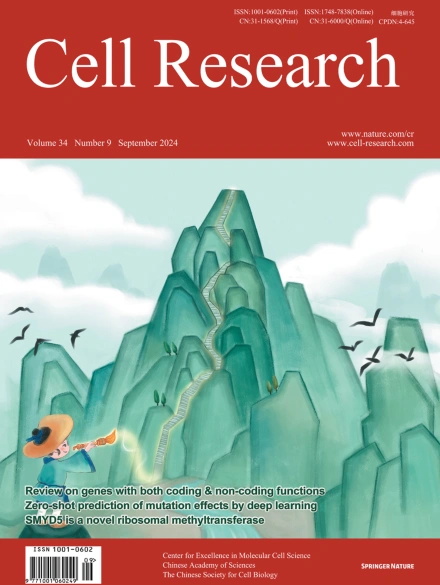
Advanced Search
Submit Manuscript
Advanced Search
Submit Manuscript
Volume 34, No 9, Sep 2024
ISSN: 1001-0602
EISSN: 1748-7838 2018
impact factor 17.848*
(Clarivate Analytics, 2019)
Volume 34 Issue 9, September 2024: 630-647 |
Zero-shot prediction of mutation effects with multimodal deep representation learning guides protein engineering
Peng Cheng1,† , Cong Mao2,† , Jin Tang3,† , Sen Yang1,† , Yu Cheng2 , Wuke Wang3 , Qiuxi Gu2 , Wei Han3 , Hao Chen2 , Sihan Li2 , Yaofeng Chen1 , Jianglin Zhou1 , Wuju Li1 , Aimin Pan3 , Suwen Zhao4,5 , Xingxu Huang3,5 , Shiqiang Zhu3,* , Jun Zhang2,* , Wenjie Shu1,* , Shengqi Wang1,*
1Bioinformatics Center of AMMS, Beijing, ChinaMutations in amino acid sequences can provoke changes in protein function. Accurate and unsupervised prediction of mutation effects is critical in biotechnology and biomedicine, but remains a fundamental challenge. To resolve this challenge, here we present Protein Mutational Effect Predictor (ProMEP), a general and multiple sequence alignment-free method that enables zero-shot prediction of mutation effects. A multimodal deep representation learning model embedded in ProMEP was developed to comprehensively learn both sequence and structure contexts from ~160 million proteins. ProMEP achieves state-of-the-art performance in mutational effect prediction and accomplishes a tremendous improvement in speed, enabling efficient and intelligent protein engineering. Specifically, ProMEP accurately forecasts mutational consequences on the gene-editing enzymes TnpB and TadA, and successfully guides the development of high-performance gene-editing tools with their engineered variants. The gene-editing efficiency of a 5-site mutant of TnpB reaches up to 74.04% (vs 24.66% for the wild type); and the base editing tool developed on the basis of a TadA 15-site mutant (in addition to the A106V/D108N double mutation that renders deoxyadenosine deaminase activity to TadA) exhibits an A-to-G conversion frequency of up to 77.27% (vs 69.80% for ABE8e, a previous TadA-based adenine base editor) with significantly reduced bystander and off-target effects compared to ABE8e. ProMEP not only showcases superior performance in predicting mutational effects on proteins but also demonstrates a great capability to guide protein engineering. Therefore, ProMEP enables efficient exploration of the gigantic protein space and facilitates practical design of proteins, thereby advancing studies in biomedicine and synthetic biology.
https://doi.org/10.1038/s41422-024-00989-2